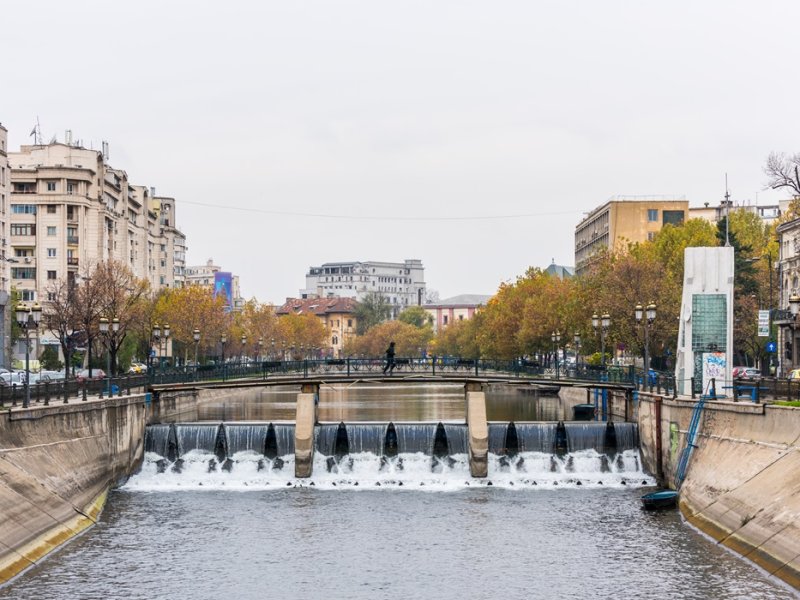Dâmbovița – Bucharest’s Quiet Veins

By Bucharest Team
- Articles
Dâmbovița is not just a watercourse flowing through the city. It’s a quiet yet powerful force of urban structure—a witness to Bucharest’s complex relationship with nature, hygiene, aesthetics, and neglect. Straightened, cemented, overlooked, and occasionally reimagined, Dâmbovița is a silent mirror of the city it cuts through.
A river of borders and memory
A right-bank tributary of the Argeș River, Dâmbovița springs from the Făgăraș Mountains, flowing from Brașov County across Muntenia before reaching Glina, where it leaves Bucharest—canalized and less free than when it entered. From there, it joins the Argeș, whose waters eventually meet the Danube and flow into the Black Sea. Historically, Dâmbovița marked natural borders, provided sustenance, and brought disaster through floods.
Channeling a wild river
For centuries, Dâmbovița was unruly: shifting beds, swampy banks, and often polluted by the growing city. While regulation projects began in the late 19th century, the true transformation came under communism. In the 1980s, during massive demolitions in central Bucharest, the river was entirely canalized and rerouted. An underground parallel collector was added to drain and treat wastewater.
A river crossing districts and decades
Dâmbovița enters Bucharest through the west, at Semănătoarea–Grozăvești, winding through Cotroceni, Eroilor, Izvor, and Piața Unirii. In the city center, it becomes partially hidden under infrastructure—yet also oddly visible at Unirii. From this dense traffic knot, it heads southeast through Timpuri Noi, Văcărești, Vitan-Bârzești, and Nicolae Grigorescu, exiting at Glina. Along this route, it connects vastly different areas—from university campuses and parks to former working-class and industrial zones.
Dâmbovița today: infrastructure, ecology, and potential
While lacking deep urban renewal, the river has started to regain public attention. Around it, regeneration projects are emerging: the creation of Văcărești Natural Park, renewed embankments for pedestrians and cyclists, and visions of transforming Dâmbovița into a green-blue corridor. Meanwhile, it remains vital to the city’s wastewater system via the Glina treatment plant—the largest of its kind in Romania.
A river we no longer see
Dâmbovița is ever-present yet invisible. Residents cross it daily without noticing. It flows beside the M1 metro line, along Piața Unirii, curving between Eroilor and Izvor. Rarely viewed as aesthetic, its concrete banks are broken by roads and utilitarian bridges. Despite efforts like the “Dâmbovița Delivery” urban project, the river remains more backdrop than protagonist.
When a city forgets its waters
Major European capitals celebrate their rivers—Paris with the Seine, London with the Thames, Berlin with the Spree. They are places of promenade, connection, and cultural life. Bucharest, by contrast, seems to have abandoned the idea that Dâmbovița could be part of urban vitality. There are no riverside restaurants, no boats, and only a few pedestrian areas along its course. The green space near Timpuri Noi is an exception, not a rule.
This neglect reflects a deeper urban philosophy: nature must be controlled, canalized, neutralized—and once tamed, forgotten.
Could it come back to life?
And yet, Dâmbovița holds real potential for revival. Its banks could become green arteries, slow-mobility corridors connecting whole districts. In a city choking on traffic and short on meaningful public space, reclaiming the river could reconcile residents with their environment.
But first, we must stop. And see it.






























